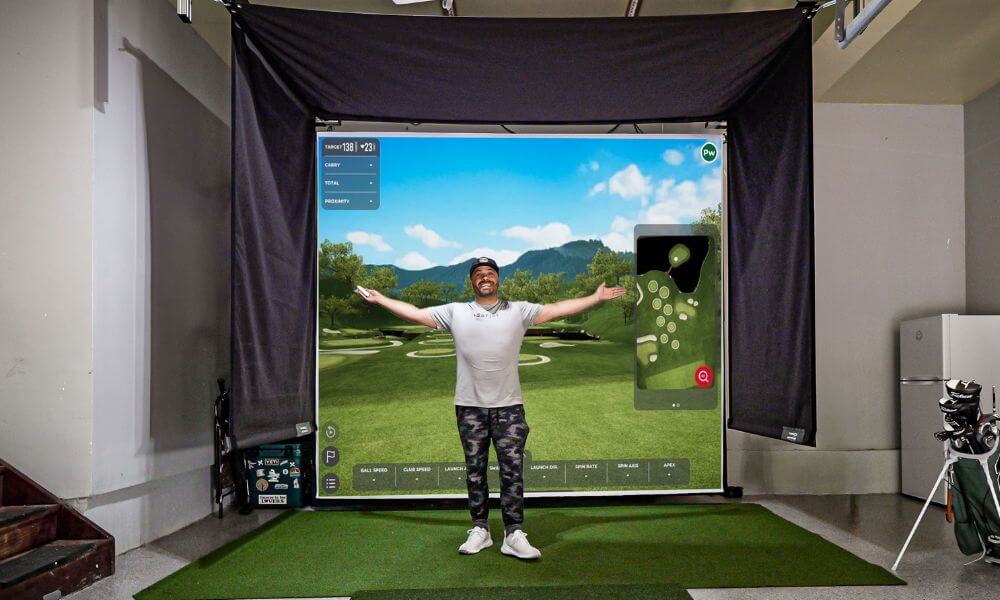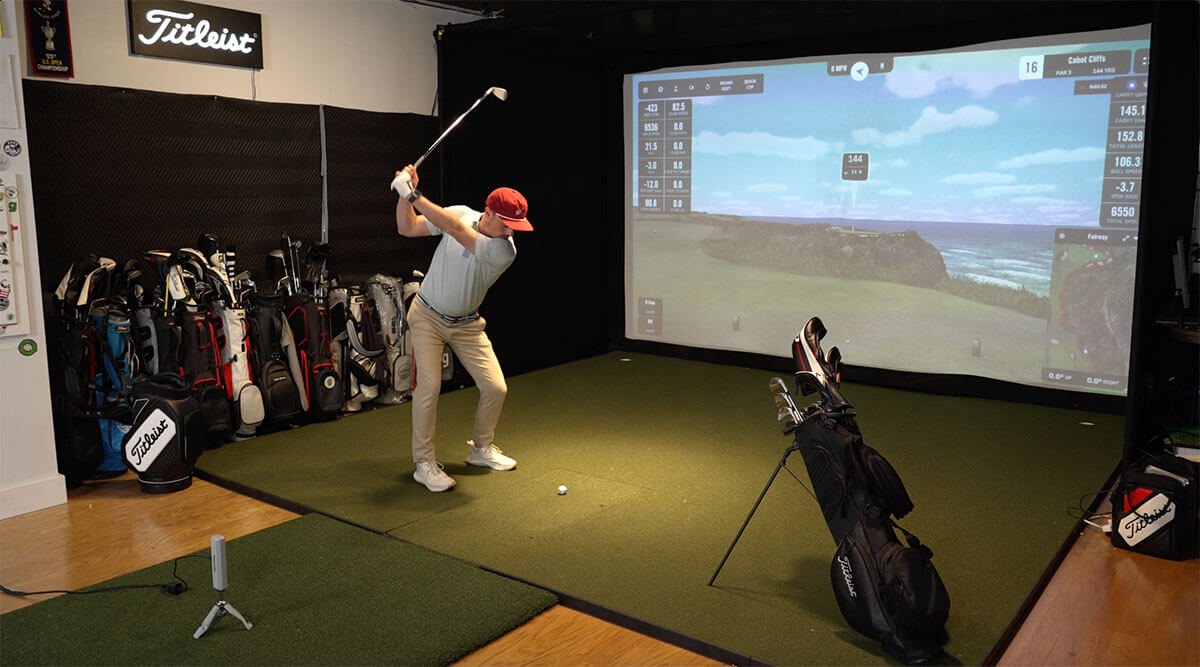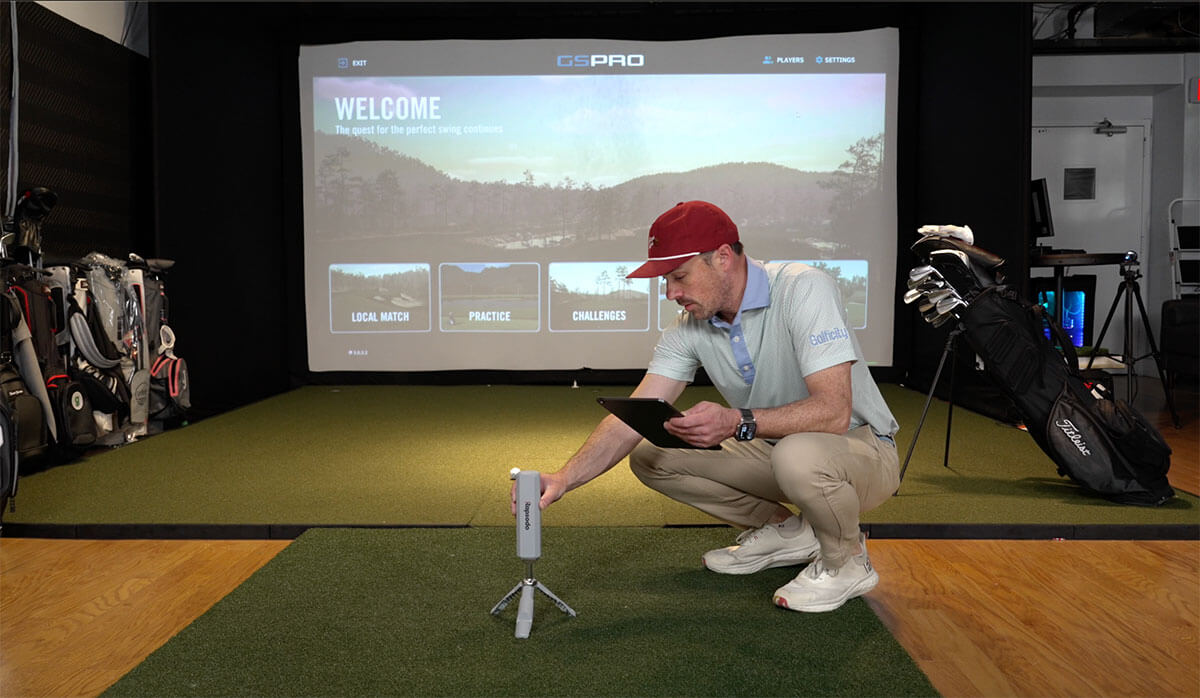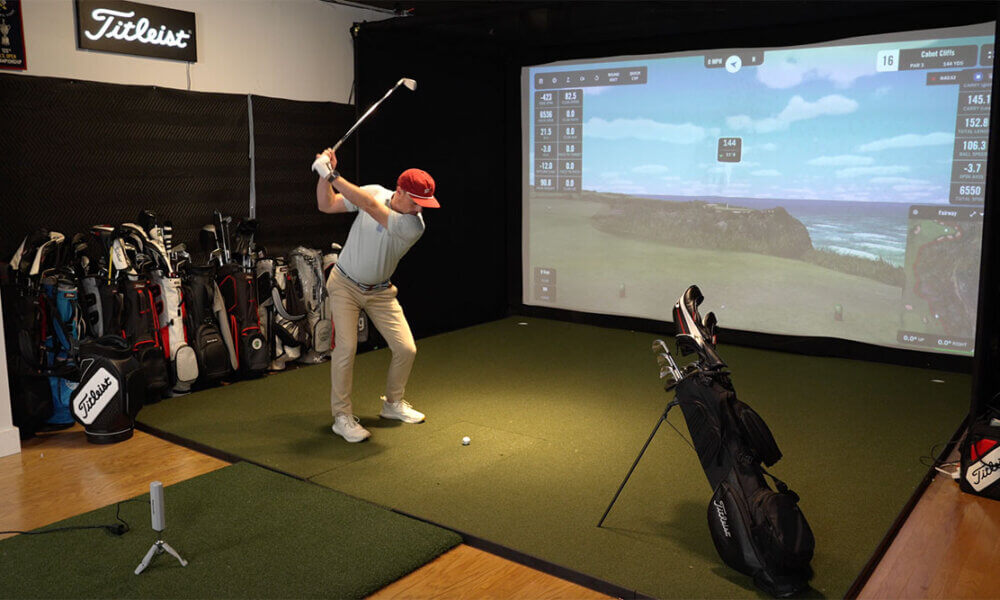Golf simulators have come a long way from being a luxury item at country clubs or training centers.
Today, more golfers than ever are building home golf simulator setups in basements, garages, and spare rooms. With more affordable systems, incredible accuracy, and realistic course play, the question on many golfers’ minds is: Are golf simulators worth it in 2025?

In this complete buyer’s guide, we’ll break down what simulators do, how much they cost, who they’re best for, and review the best golf simulators 2025—from budget launch monitors like the Rapsodo MLM2PRO to professional systems like Foresight GC3 and Uneekor.
Why Golf Simulators Are More Popular Than Ever
The rise in popularity is easy to explain: technology has improved, prices have dropped, and more golfers want year-round practice. In short, you no longer need $30,000 or a full studio build to own a system that tracks your shots with tour-level accuracy.
Even an entry-level budget golf simulator now provides data that was once reserved for pros and coaches.

For recreational golfers, simulators are also fun. They transform practice into entertainment—you can play Pebble Beach or St. Andrews with friends without booking flights.
For serious players, simulators provide critical swing data (like launch angle, spin rate, and club path) that accelerates improvement.
Benefits of a Home Golf Simulator
Year-round play: No more worrying about weather, daylight, or course availability.
Instant feedback: Get ball and club data instantly—something you don’t get on the range.
Play famous courses: Software packages let you tee it up at iconic destinations worldwide.
Fun for the family: Great for parties, kids, and casual competition.
Long-term savings: Over a few years, a simulator can pay for itself compared to range buckets and greens fees.
Best Golf Simulators 2025 (Comparison)
Below is a breakdown of the top systems across different budgets. Each has unique strengths, so the right one depends on your goals and space.
Model
Price
Features
Best For
Rapsodo MLM2PRO
Under $1,000
Dual cameras + Doppler radar, 15 metrics, GSPro & E6 compatible
Best budget pick; portable, accurate, feature-packed
Garmin Approach R50
$4,999
Built-in touchscreen, no PC required, 43,000+ courses
Plug-and-play users wanting an all-in-one system
SkyTrak+
$2,495
Radar + photometric, huge software library
Golfers who want flexibility and online simulation play
Foresight GC3
$6,995+
Tournament-grade accuracy, club + ball data
Serious golfers, fittings, teaching pros
Uneekor EyeXO2
$10,000+
Overhead mount, pro-level accuracy, multi-club tracking
Full studio builds, academies, commercial setups
Why the Rapsodo MLM2PRO Is the Best Budget Simulator
If you’re looking for value, nothing in 2025 beats the Rapsodo MLM2PRO. For under $1,000, it combines dual photometric cameras with Doppler radar—something unheard of in this price range.
It tracks 15 data points including spin, club path, and angle of attack, and integrates seamlessly with GSPro for full simulator play.

It’s also portable—meaning you can use it indoors into a net or outdoors at the range. For golfers who don’t want to spend thousands but still want reliable data and simulator fun, this is the clear winner in the budget category.
How Much Does a Golf Simulator Cost?
Costs vary depending on features and setup. Here’s a quick guide:
Entry level: $500–$1,000 (Rapsodo MLM2PRO, basic nets/screens)
Mid-range: $2,500–$6,000 (SkyTrak+, Garmin R50, more robust setups with projector/screens)
High-end: $7,000–$20,000+ (Foresight GC3, Uneekor EyeXO2, full studio builds)
Beyond hardware, remember to budget for mats, nets, screens, and possibly software subscriptions (GSPro, E6, or proprietary apps). Those can add $200–$1,000+ per year depending on your setup.
Home Golf Simulator Setup Guide
You don’t need a mansion to own a simulator. Many golfers convert garages or spare rooms into compact golf studios. Here’s what you’ll need:
Launch Monitor: Tracks ball and club data (the heart of your setup).
Software: E6, GSPro, Awesome Golf, or Garmin’s built-in Home Tee Hero.
Impact Screen or Net: Screens make it immersive, nets keep costs down.
Hitting Mat: Protects your floor and simulates turf interaction.
Projector (optional): For full-screen simulation.
Space: Most setups need ~10 feet of depth and 9 feet of ceiling height.
Pros and Cons of Golf Simulators
Before you pull the trigger, here are the main advantages and trade-offs:
Pros:
Practice anytime, regardless of weather
Detailed swing and ball data
Entertainment value with friends/family
Potential cost savings over time
Cons:
Upfront cost can be high
Space requirements may limit setups
Accuracy varies between models
Some require software subscriptions
FAQs About Golf Simulators
What do golf simulators track?
Ball speed, launch angle, spin rate, carry distance, total distance, smash factor, club path, face angle, and more. Premium models like the GC3 or Uneekor even provide high-speed impact visuals.
Are golf simulators accurate?
Yes. Entry-level units like the Rapsodo are within a few percent of pro systems. Premium models are nearly exact—many coaches and fitters use them professionally.
Do I need a lot of space?
Not necessarily. A garage or basement works fine. Recommended space: 10′ deep x 12′ wide x 9′ high. Compact units like Rapsodo work in smaller spaces with nets.
How much do simulators cost to maintain?
Most require little maintenance beyond software updates. Budget for annual software subscriptions ($100–$1,000) if you want new courses or online play.
Can I use real balls?
Yes. All major simulators are designed for real golf balls. For safety indoors, some players use limited-flight balls.
Final Thoughts: Are Golf Simulators Worth It?
Golf simulators in 2025 are better, more accurate, and more affordable than ever. If you want to get better at golf, play more often, or bring the game into your home, they’re absolutely worth it. For under $1,000, the Rapsodo MLM2PRO is a game-changer. For mid-range plug-and-play, the Garmin R50 and SkyTrak+ shine. And if you want a pro-grade studio, look at Foresight GC3 or Uneekor.
Bottom line: Whether you’re grinding to shave strokes or just want the ultimate golf toy, there’s a simulator out there that fits your space, budget, and goals.
Need Help Choosing a Golf Simulator Setup?
If you’re ready to purchase a home golf simulator setup but are still not sure which components are best for your space and budget, a wise choice is to enlist the help of experts from retailers like PlayBetter.com.
Places like PlayBetter are great because they are brand agnostic, meaning they carry all the best home golf simulator brands and won’t try to sell you on anything specific. Instead, they can help steer you towards the best option with their many years of experience in the industry.







